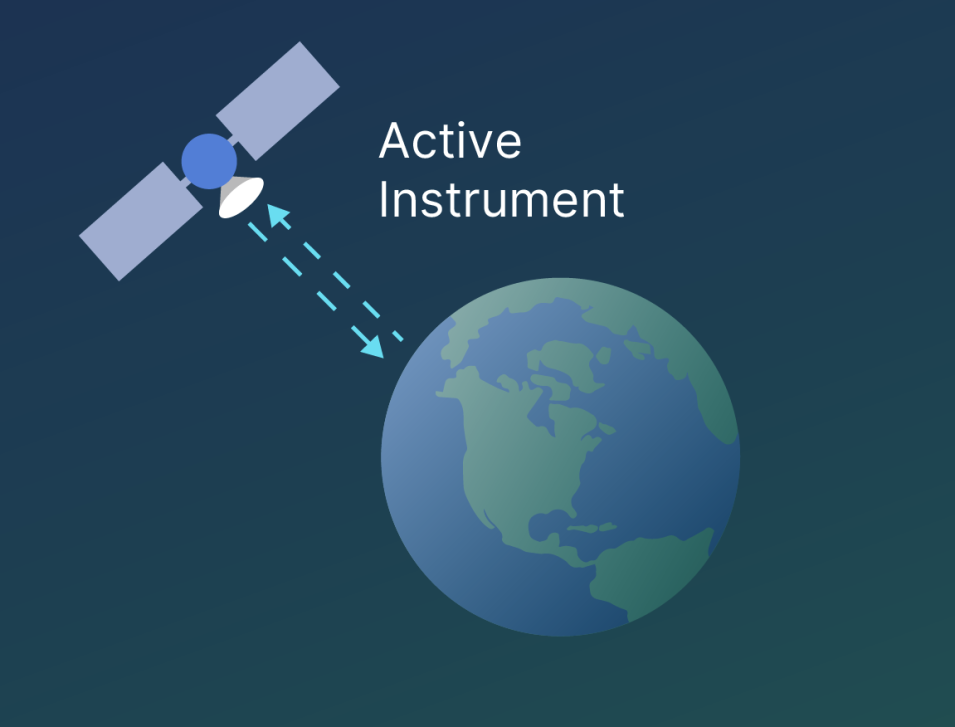There are six main categories of active instruments reflected in NASA Earth science data. Learn more about the different types of active instruments below.
Laser Altimeter
An instrument that uses lidar to measure the height of the platform (spacecraft or aircraft) above the surface. The height of the platform with respect to the mean Earth’s surface is used to determine the topography of the underlying surface.
Lidar
A light detection and ranging instrument that uses a laser (light amplification by stimulated emission of radiation) radar to transmit a light pulse and a receiver with sensitive detectors to measure the backscattered or reflected light. Distance to the object is determined by recording the time between transmitted and backscattered pulses and by using the speed of light to calculate the distance traveled.
Radar
A radio detection and ranging instrument that provides its own source of electromagnetic energy. An active radar instrument, whether aboard a space-based platform or aboard an aircraft, emits microwave radiation in a series of pulses from an antenna. When the energy reaches the target, some of the energy is reflected back toward the instrument. This backscattered microwave radiation is detected, measured, and timed. The time required for the energy to travel to the target and return to the instrument determines the distance or range to the target. By recording the range and magnitude of the energy reflected from all targets as the instrument passes by, a two-dimensional image of the surface can be produced. Synthetic aperture radar (SAR) is a radar technique.
Ranging Instrument
A device that measures the distance between the instrument and a target object. Radars and altimeters work by determining the time a transmitted pulse (microwaves or light) takes to reflect from a target and return to the instrument. Another technique employs identical microwave instruments on a pair of platforms. Signals are transmitted from each instrument to the other, with the distance between the two determined from the difference between the received signal phase and transmitted (reference) phase. These are examples of active techniques. An active technique views the target from either end of a baseline of known length. The change in apparent view direction (parallax) is related to the absolute distance between the instrument and target.
Scatterometer
A high-frequency microwave radar designed specifically to measure backscattered radiation. Over ocean surfaces measurements of backscattered radiation in the microwave spectral region can be used to derive maps of surface wind speed and direction.
Sounder
An instrument that measures the vertical distribution of precipitation and other atmospheric characteristics such as temperature, humidity, and cloud composition.
